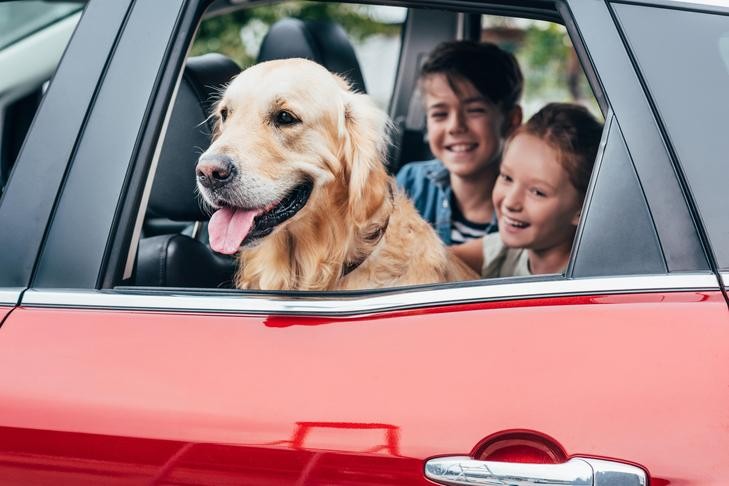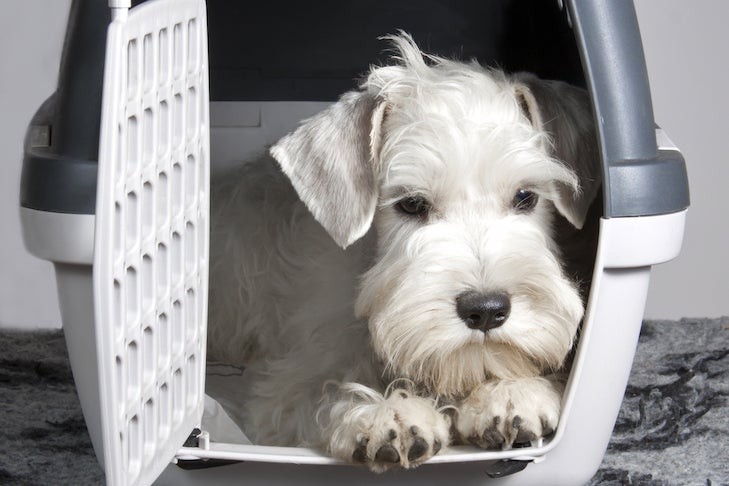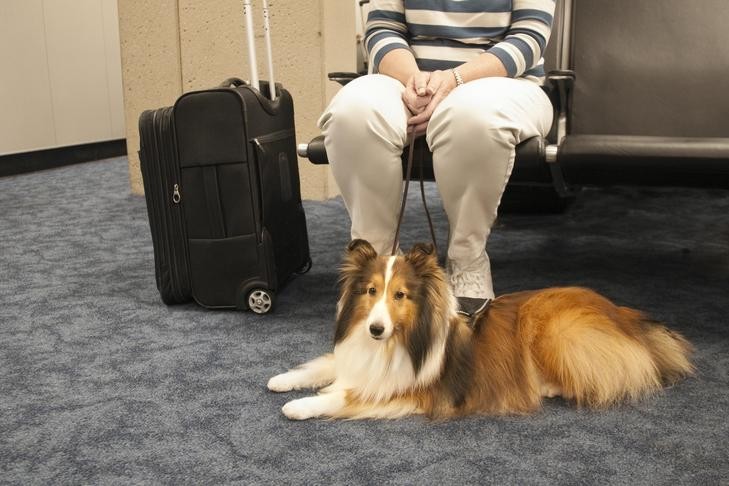Taking your dog on your travels can enrich your experience, turning a simple vacation into an unforgettable adventure for both of you. However, successful pet travel requires careful preparation and consideration. This guide will provide you with essential tips for smooth and safe journeys with your canine companion, whether you’re hitting the road, taking to the skies, or exploring other modes of transport.
Ensuring Your Dog’s Health and Safety on the Road
Prioritizing your dog’s health is paramount before embarking on any travel. A pre-trip veterinary check-up is crucial to ensure your dog is fit for travel and to update any necessary vaccinations. Always carry your dog’s vaccination records with you, as they may be required for air travel or when crossing state lines. It’s also a good time to discuss with your vet if your dog is mentally and physically suited for travel, as not all dogs enjoy being away from their familiar home environment.
Maintaining your dog’s well-being during travel also means packing appropriately. Bring a sufficient supply of your dog’s regular food to avoid digestive upsets from sudden dietary changes. Access to fresh, clean water is vital, so carry bottled water, especially if you’re unsure about the water quality at your destination. Don’t forget any essential medications your dog needs, and keep them easily accessible.
{width=729 height=486}A happy Golden Retriever enjoys a car ride with children, emphasizing the joy of family travel with pets.
Being prepared for emergencies is another key aspect of responsible dog travel. Before you leave, locate the nearest 24-hour emergency veterinary hospital at your destination and save their contact information in your phone. Also, keep your regular vet’s contact details handy, including their emergency number, in case consultation between vets is needed. This preparedness can be invaluable in case of any unexpected health issues.
The Importance of Dog Travel Crates
A dog crate is more than just a carrier; it’s a safety tool and a portable den for your dog. For car travel, a crate securely placed in the vehicle can significantly enhance your dog’s safety and prevent distractions while driving. For air travel, airlines typically require dogs to be transported in crates that meet specific regulations. Beyond transportation, a crate provides a safe and familiar space for your dog in unfamiliar environments like hotels or friends’ homes, helping to reduce anxiety and prevent them from getting into mischief. Equip the crate with comfortable bedding, like an orthopedic crate pad, a favorite toy for comfort, and a travel water bottle to ensure they have everything they need within their personal space.
When selecting a dog travel crate, consider these essential features:
- Size: Ensure it’s large enough for your dog to comfortably stand, turn around, and lie down.
- Durability: Choose a strong crate with sturdy handles and grips, free from any sharp interior parts that could harm your dog.
- Leak-proof base: Opt for a crate with a leak-proof bottom, lined with absorbent material for hygiene and comfort during travel.
- Ventilation: Good ventilation is crucial. The crate should have ventilation on opposite sides with exterior rims or knobs to maintain airflow.
- Identification labels: Clearly label the crate as “Live Animal” with arrows indicating the upright position, and include your name, address, and phone number for identification.
Dog Identification: Keeping Your Pet Safe
Dog identification is critically important when traveling. Even well-behaved dogs can getDisoriented in new places, increasing the risk of them getting lost. Proper identification significantly improves the chances of a reunion if your dog becomes separated from you.
Start with the basics: ensure your dog wears a sturdy collar with a secure leash. Attach identification tags to the collar with essential information: your dog’s name, your name, and your permanent home phone number. Proof of rabies vaccination on the tag is also advisable. If your trip is extended, consider adding a temporary tag with your vacation location and phone number.
For a more permanent and reliable form of identification, microchipping is highly recommended. A microchip can be scanned at vet clinics and shelters worldwide, providing a sure way to link your dog back to you, even if collar tags are lost.
Always carry recent photographs of your dog with you. These photos can be incredibly helpful in quickly creating “lost dog” notices and sharing them with local shelters and online communities if needed. It’s also wise to keep a copy of your dog’s health and vaccination records accessible, especially if you are crossing borders or staying in pet-friendly accommodations that may require proof of vaccinations.
{width=729 height=486}A Sealyham Terrier relaxes in a travel crate, demonstrating a secure and comfortable way for dogs to travel and rest.
Car Travel Tips for Dogs
Acclimating your dog to car travel before a long trip can make the journey much smoother. Begin with short drives, gradually increasing the duration to help your dog become comfortable in the car. Always secure your dog in the car using a dog seatbelt, car seat, or safety harness. These restraints not only protect your dog in case of sudden stops or accidents but also prevent them from distracting the driver.
Ensure the car is well-ventilated to keep your dog comfortable, especially during warmer months. If your dog is crated in the car, make sure the crate allows for good airflow. To prevent carsickness, avoid feeding your dog a large meal right before traveling. However, ensure they have access to water at all times to stay hydrated. Plan for frequent stops for exercise and bathroom breaks. Always be responsible and clean up after your dog during these stops.
Never allow your dog to ride in the open bed of a truck. This is extremely dangerous and can lead to severe injuries or fatalities. Equally important, never leave your dog unattended in a parked car, especially in hot weather. Temperatures inside a closed car can rise rapidly, even on moderately warm days, leading to heatstroke, which can be fatal for dogs. If you must leave the car, ensure someone stays with your dog or find a safe, climate-controlled alternative.
Flying With Your Dog: Airline Travel Essentials
If air travel is part of your plans, booking arrangements for your dog must be made in advance, ideally when you book your own flight. Airlines often have restrictions on the number of pets allowed per flight, and spaces fill quickly. Contact the airline directly to understand their specific pet travel policies, fees, and any necessary documentation.
A pre-flight vet visit is essential. While a health certificate may not be required for all domestic flights, regulations vary by airline and destination. Your vet can confirm your dog is healthy enough to fly and that all vaccinations are current. Discuss with your vet whether sedation is advisable for your dog during the flight. Consider the temperature conditions at both your departure and arrival cities, as extreme temperatures can impose restrictions on pet air travel for your dog’s safety.
{width=729 height=486}A well-trained Shetland Sheepdog service dog rests beside its owner in an airport, illustrating the possibility of air travel with dogs, especially service animals.
Exploring Other Travel Modes: Trains, Buses, and Boats
Traveling with dogs on trains, buses, or boats has varying levels of feasibility depending on the mode of transport and the company’s pet policies. Amtrak, for instance, generally only permits small dogs (under 20 pounds) on their trains. Bus lines like Greyhound typically do not allow pets, except for service animals. Local train and bus services will have their own rules, so it’s crucial to check directly with the specific provider.
Cruise lines also have diverse pet policies. Some might allow pets, particularly on certain routes or types of cabins, while many others do not. Always verify the pet policy of your chosen cruise line or ship well in advance before making travel plans with your dog.
For international travel with your dog, the complexity increases significantly. International pet travel requires meticulous planning, including understanding the regulations of your destination country regarding pet entry, quarantine, and required health documentation. Researching and preparing for these requirements well in advance is critical for a successful international trip with your pet.
Top Travel Tips for a Happy Dog
Regardless of your chosen travel method, some universal tips can make traveling with your dog more enjoyable for everyone. Plan bathroom breaks proactively. Train your dog to relieve themselves on various surfaces besides grass before your trip. This adaptability is invaluable when traveling, as you might encounter rest stops with concrete, gravel, or mulch. Always carry poop bags and a leash for responsible waste disposal.
To keep your dog entertained and reduce travel stress, pack a mix of familiar and new toys. Puzzle toys are excellent for mental stimulation during travel. Remember to pack sufficient food and water, and consider using bottled water to prevent stomach upsets due to unfamiliar water sources. Lightweight, collapsible travel bowls are ideal for saving space and easy feeding on the go. Introduce these new bowls to your dog before your trip to ensure they are comfortable using them.
Finding Dog-Friendly Hotels and Accommodations
Securing dog-friendly accommodations is a crucial step in planning your trip. Not all hotels accept dogs, and those that do may have restrictions on size, breed, or additional fees. Research and book pet-friendly hotels or rentals in advance, both at your destination and along your travel route if you’re undertaking a road trip.
When staying at a hotel with your dog, be considerate of other guests and hotel staff. Keep your dog quiet, especially in common areas and guest rooms, and never leave your dog unattended in the room unless explicitly permitted and under safe conditions. Always inquire about designated dog-walking areas at the hotel and diligently clean up after your pet. Your responsible behavior ensures that hotels continue to welcome dogs in the future.
Before allowing your dog to roam freely in your hotel room or rental, take time to puppy-proof the space. Check for and secure any accessible electrical cords, remove any potentially hazardous items left by previous guests, and ensure there are no toxic substances within reach.
Ultimately, remember that travel should be a positive experience for both you and your dog. Travel can be stressful, and dogs are highly attuned to their owners’ emotions. Staying calm and relaxed yourself will help keep your dog calm. However, recognize that not all dogs are travel enthusiasts. If your dog exhibits significant stress or anxiety when traveling, consider whether it might be kinder for them to stay home in their familiar environment, perhaps with a trusted dog sitter. Making the best decision for your dog’s well-being is the hallmark of a responsible and loving pet owner.

